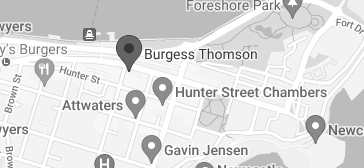Property Law Advice
Property & Conveyancing
we guide you through your property transactions with sound legal advice
Easements
An easement is an interest held by another landowner or statutory body registered on the title of the property which affects a defined area of the land. Generally, this will be a right to use the part of the land for a specified purpose such as a right of way. We can advise you on any easement whether it is a positive, negative, private or public and can act on your behalf as the dominant tenement (party the interest benefits), or the servient tenement (party the interest burdens).
Limited Title
When a property’s boundaries have not been fully defined by a survey in a new deposited plan (DP) a Limited Certificate of Title is issued. A Limited Certificate of Title’s purpose is to indicate that the boundaries of the property have not been examined by NSW Land Registry Services which may be a concern for prospective purchasers of a property. Removing the limitation requires a survey to be conducted and lodged which satisfactorily defines the boundaries. This an additional cost that must be factored into decisions made concerning property with a Limited Title.
Rights of Way
A right of way is an example of an easement whereby a right is granted to travel over land which they do not own in a particular manner. This does not allow the taking of anything from the property such as crops or soil, but merely confers a right to pass through.
You may also encounter a right of way in gross, otherwise known as a statutory right of way. These differ in that they are created in favour of a statutory authority or company prescribed by regulations. We can assist you in relation to a property effected by a right of way to ensure you know your rights and responsibilities.
Possessory Title
The law regards the possession or occupation of land as evidence of ownership. Therefore, a trespasser or squatter (adverse occupier) who has had uninterrupted possession of land can displace the legal owner of the land’s rights to recover such land. To displace these rights, consider the following circumstances:
The Land is Owned by the Crown:
If adverse possession began after 1 January 1970, the adverse occupier must prove that possession has been held for 30 years.
If adverse possession began before 1 January 1970, the adverse occupier must prove that possession has been held for 60 years.
The Land is Owned Privately:
If adverse possession began after 1 January 1970, the adverse occupier must prove that possession has been held for 12 years.
If adverse possession began before 1 January 1970, the adverse occupier must prove that possession has been held for 20 years.
Dividing Fences
A dividing fence separates the land and property of neighbouring owners. The fence, which can be built out of any different material, must be approved under the Dividing Fences Act 1991 (NSW). In the event of a dispute over the position, construction or cost of the dividing fence, the team at Burgess Thomson can advise and assist you.
Boundary Disputes
Boundary disputes can occur when an agreement cannot be met on the correct location of a boundary, such as a dividing fence. Disputes over boundaries can be both costly and time consuming as these are traditionally resolved by the Supreme Court. Alternatively, an application under Part 14A of the Real Property Act 1900 (NSW) can be lodged to NSW Land Registry Services, allowing the Registrar General to resolve the dispute in a cost and time effective manner. Burgess Thomson can assist you with any issues related to boundary disputes and assist you to receive a satisfactory outcome.
GET A QUICK QUOTE
Enter your details for an obligation free quote.
Find out more about how we can help Buying Property.
Adverse Possession
Adverse Possession is when someone becomes eligible to take legal right over land after occupying it for an extended period of time. NSW law determines that an individual must be occupying land or property for at least 12 years before able to take legal Adverse possession. Adverse possession, colloquially referred to as “Squatters rights” is a rare and often complex legal process. If you are eligible for adverse possession rights the team at Burgess Thomson can advise you.
Dividing Fences
A dividing fence separates the land and property of neighbouring owners. The fence, which can be built out of any different material, must be approved under the Dividing Fences act. In the event of a dispute over the position, construction or cost of the dividing fence, the legal team at Burgess Thomson can advise and assist you.
Boundary Disputes
Boundary disputes can occur when surveyors of adjoining properties can not come to an agreement on the location of a boundary. In order to reach an agreement and settle a boundary dispute, the surveyors can apply to the NSW Land and Registry Service for a resolution under the 14A of the Real Property Act 1900. You can speak to the team at Burgess Thomson for advice relating to boundary disputes on your property.



